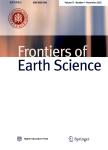Network analysis of eight industrial symbiosis systems
Network analysis of eight industrial symbiosis systems作者机构:State Key Joint Laboratory of Environmental Simulation and Pollution Control School of Environment Beijing Normal University Beijing 100875 China Department of Public Policy City University of Hong Kong Hong Kong China Solid Waste and Chemical Management Center of MEP Beijing 100029 China Chinese Research Academy of Environmental Sciences Beijing 100012 China
出 版 物:《Frontiers of Earth Science》 (地球科学前沿(英文版))
年 卷 期:2016年第10卷第2期
页 面:352-365页
核心收录:
学科分类:0710[理学-生物学] 07[理学] 0708[理学-地球物理学] 070104[理学-应用数学] 0704[理学-天文学] 0701[理学-数学] 071002[理学-动物学]
基 金:This work was supported by the Fund for Innovative Research Group of the National Natural Science Foundation of China (No. 51421065) by the Program for New Century Excellent Talents in University (No. NCET-12-0059) and by the National Natural Science Foundation of China (Grant No. 41171068) and by the Fundamental Research Funds for the Central Universities (2015KJJCA09)
主 题:industrial ecology network analysis density,network degree centralization eco-industrial park
摘 要:Industrial symbiosis is the quintessential characteristic of an eco-industrial park. To divide parks into different types, previous studies mostly focused on qualitative judgments, and failed to use metrics to conduct quantitative research on the intemal structural or functional characteristics of a park. To analyze a park's structural attributes, a range of metrics from network analysis have been applied, but few researchers have compared two or more symbioses using multiple metrics. In this study, we used two metrics (density and network degree centraliza- tion) to compare the degrees of completeness and dependence of eight diverse but representative industrial symbiosis networks. Through the combination of the two metrics, we divided the networks into three types: weak completeness, and two forms of strong completeness, namely "anchor tenant" mutualism and "equality-oriented" mutualism. The results showed that the networks with a weak degree of completeness were sparse and had few connections among nodes; for "anchor tenant" mutualism, the degree of completeness was relatively high, but the affiliated members were too dependent on core members; and the members in "equality-oriented" mutualism had equal roles, with diverse and flexible symbiotic paths. These results revealed some of the systems' internal structure and how different structures influenced the exchanges of materials, energy, and knowledge among members of a system, thereby providing insights into threats that may destabilize the network. Based on this analysis, we provide examples of the advantages and effectiveness of recent improvement projects in a typical Chinese eco-industrial park (Shandong Lubei).



